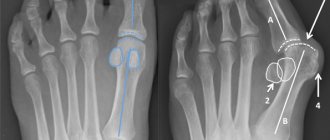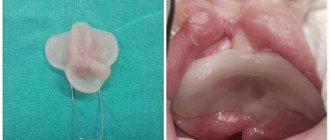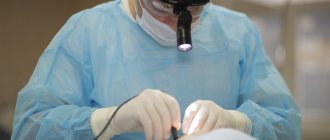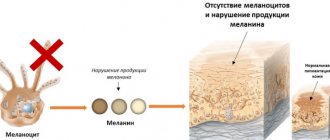Lung cancer is a malignant tumor of the main organ of the respiratory system, capable of growing into the surrounding tissues, destroying them and creating metastases - additional foci of the disease in other organs. Fighting it is an extremely difficult task, since its cells develop rapidly, multiply uncontrollably and move throughout the body through the blood and lymphatic vessels. The lymphatic system complements the cardiovascular system. The lymph circulating in it - the intercellular fluid - washes all the cells of the body and delivers the necessary substances to them, taking away waste. In the lymph nodes, which act as “filters,” hazardous substances are neutralized and removed from the body. systems
Today, there are many methods to destroy, inhibit the growth or reduce dangerous tumors, but the only way to completely remove them from the body is surgery.
Who should undergo surgery for lung cancer?
Surgery is rarely used as the primary treatment for small cell tumors
, accounting for 15% to 20% of all lung cancer cases. This approach is explained by their very rapid development - in most cases, by the time they are detected, they manage to affect a large number of body tissues, which makes it extremely difficult to combat them. In less than 1 out of 20 patients, they are detected as a single focus that has not spread its cells to the lymph nodes. Lymph nodes are tiny organs of the lymphatic system that detect and neutralize substances dangerous to the body. or other organs. Patients with a similar diagnosis in the initial stages may be prescribed surgery followed by chemotherapy - taking medications that destroy the changed cells. In addition, they are carried out not only with the aim of completely removing the cancer, but also as part of palliative therapy, the goal of which is to relieve symptoms and improve a person’s quality of life.
For non-small cell tumors
the prospects are more optimistic - usually in the early stages such tumors can be completely cured with surgery.
What is lung and why is it needed?
In a healthy human body there are two such soft, elastic, spongy organs. The right lung consists of 3 main parts - lobes, and the smaller left lung, located next to the heart, consists of two.
How do we breathe?
The air enters the mouth or nose, and then into the trachea, which bifurcates into bronchi, which divide and form small branches - bronchioles. At the end of them are alveoli - tiny sacs that absorb - transfer oxygen into the blood and remove carbon dioxide from it during exhalation. Both organs are surrounded by a thin protective film called the pleura, which helps them slide back and forth along the chest wall during expansion and contraction. Below them is the diaphragm, a thin, dome-like muscle that separates the chest from the abdomen, which contains major vital organs such as the intestines, liver, kidneys, spleen and others. As you breathe, it moves up and down, allowing the lungs to expand and contract in volume, taking in and releasing air.
Surgical procedures on the thoracic spine
The list of surgical procedures on the thoracic spine is almost no different from traditional ones, but the operation can be done in a slightly different way, since the chest is protected by the ribs in front, and vital organs (heart and lungs) are nearby. Typically, surgeries on the thoracic spine are performed through a posterior approach, but the results are unsatisfactory because some areas cannot be accessed from the rear.
In recent years, surgeons have begun to use an anterior transthoracic approach along with a posterolateral (posterior and lateral) approach. Although the anterior approach is more complex, it allows for more positive results in the treatment of herniated discs and degenerative back diseases.
Is it possible to remove a lung?
Most people can get by with just one lung, as long as the other is healthy, intact, providing enough oxygen and clearing out carbon dioxide.
The respiratory system plays a very important role, and its improper functioning can affect a person's quality of life. That is why doctors try to preserve a maximum of tissue and remove a minimum - only a small area, or segment. Unfortunately, such intervention is not always sufficient. In case of serious injuries, tuberculosis, severe fungal infections, certain diseases, as well as cancer and its metastases, complete removal of the lung may be necessary.
Preparing for surgery
Before undergoing surgery, it is necessary to undergo preparation:
- A complete examination, during which doctors assess the patient’s health status, the size and contours of the tumor, the number of tissues affected by the disease, and identify metastases - additional cancerous tumors in various organs. It includes taking tests and performing a whole range of diagnostic procedures:
- blood and urine tests to detect infections and malfunctions of internal organs;
- esophagoscopy – assessment of the condition of the esophagus;
- bronchoscopy - examination of the bronchiBronchi are branches of the trachea through which air passes into the lungs.;
- thoracoscopy - examination of the respiratory organs through small incisions on the chest and back;
- or MRI, during which the doctor receives a clear image of the internal organs, determines the size of the tumor, its exact location and contours;
- sputum cytology - detection of cancer cells in the mucus produced by the respiratory tract;
- mediastinoscopy – study of the condition of the lymph nodes;
- assessment of the condition of the cardiovascular system and other vital organs;
- functional pulmonary tests, which allow us to determine the quality of the respiratory system and the ability to provide the body with oxygen to the tissues remaining after the operation;
- if necessary, the doctor prescribes other procedures.
biopsy - sampling of tumor tissue to study the properties of its cells;
No smoking.
- About bleeding disorders.
Before the operation begins, the doctor talks about the planned intervention, its progress, goals, possible risks, consequences and complications. After which the patient or his legal representative signs a document - informed voluntary consent to medical intervention.
Risks and complications of thoracic spine surgery
Possible risks after thoracic spine surgery include risks that are typical for any type of procedure and risks for specific spinal problems. Common risks include:
- Complications associated with anesthesia;
- Infections;
- Bleeding;
- Blood clot formation.
Complications after spinal surgery:
- Spinal injuries;
- Nerve damage;
- Strong pain;
- Transit syndrome.
Thanks to the surgeon's skills, it is possible to get rid of some complications, especially those associated with spinal trauma and nerve damage.
Surgeries to treat lung cancer
Doctors use several methods of surgical treatment of cancer, each of which requires hospitalization in the clinic. The choice of type of intervention depends on the location of the tumor, its size, damage to nearby tissues and lymph nodes - the “filters” of our body that retain and neutralize dangerous substances. Often, specialists prefer to do more extensive surgery to remove as many of the altered cells as possible, since this approach increases the chances of a full recovery.
All such procedures are performed under general anesthesia - using a drug that puts the patient into a deep sleep with loss of consciousness - and are usually performed through a large incision between the ribs on the chest or back. In their course, not only the affected lung tissue is removed, but also the nearest lymph nodes. Such intervention is necessary to identify damage to their altered cells and the spread of oncology beyond the tissues of the respiratory system.
Depending on the type and size of the tumor, the following are used to treat cancer: Lobectomy
– removal of one lobe containing a dangerous neoplasm.
Bilobectomy
– removal of two lobes of the right lung.
Segmental resection
- during this, the surgeon cuts out only the affected segment - a small part of the lobe.
This procedure is suitable for patients whose respiratory system cannot cope with its function if the entire lobe is removed. Pulmonectomy
– complete removal of the lung.
Surgery may be required if the tumor is located near the center of the chest. Sleeve lobectomy
is the removal of a large lesion of cancer located in the main or lobar bronchus. During this procedure, the doctor removes the damaged part of the airway and sews together the remaining tissues located above and below the affected area. This type of intervention can be prescribed as an alternative to pneumonectomy, allowing maximum lung function to be preserved.
Video-assisted thoracoscopic surgery -
VATS
VATS is a minimally invasive procedure for the treatment of early stage cancer, during which a minimal amount of tissue is damaged. Traditional surgeries are performed through a large incision, while video-assisted surgeries are performed through several small punctures in the chest. They introduce special instruments and a thoracoscope - a device with a light source and a camera that displays a clear image on the monitor. The surgeon controls and controls his movements based on real-time video data.
Robotic Assisted Thoracoscopic Surgery –
RATS
RATS is a minimally invasive treatment of small tumors using a robotic system. When performing it, a specialist sits at a console in the operating room and controls the actions of manipulators that remove tumors through small punctures in the patient’s chest. The procedure provides even greater maneuverability and precision when moving instruments than VATS.
VATS and RATS are complex operations, the result of which depends entirely on the skill of the surgeon. They have several important advantages over traditional interventions: they allow minimal tissue trauma, shorten recovery time, shorten hospital stay, reduce blood loss and pain. In addition, they do not leave large scars or scars on the skin.
Decompression surgery on the thoracic spine
One of the most common back problems is compression of the spine and spinal nerves caused by various degenerative diseases, including herniated discs, spinal stenosis, spondyloarthritis, etc. There are several types of treatment to relieve symptoms associated with pinched nerves:
- Thoracic surgery for herniated discs. The procedure to remove a herniated thoracic spine is performed in cases of advanced myelopathy (compression of the spine) with neurological symptoms, such as increasing weakness in the legs and radicular pain, that cannot be relieved by other means. To gain access to a herniated disc, the surgeon cuts out the diseased portion of the disc to make room for nearby spinal nerves. In recent years, surgery for herniated discs has become increasingly performed using minimally invasive techniques, in which a much smaller incision can be made. This type of surgery is called microdiscectomy.
- Laminectomy or laminotomy. These two surgeries have the same purpose but differ in the techniques used. Laminotomy is a minimally invasive back surgery. During this procedure, the surgeon removes the lamina (the back of the vertebra), which relieves pressure on the spine. Thoracic laminectomy/laminotomy can be performed in conjunction with treatment of herniated discs or separately.
- Transthoracic decompression is a technique designed to minimize pressure on the spine. The surgeon gains access through the chest by inserting the instrument between the ribs.
How is traditional surgery to remove a lung tumor performed?
The prepared patient is brought to the operating room, where he is given anesthesia - a drug that allows him not to feel pain and puts him into a state similar to deep sleep. A tube is then inserted into his throat and connected to a ventilator, and sensors are attached to his body to measure his heart rate, blood pressure and other data. A catheter is inserted into the bladder - a soft flexible tube that drains urine. The skin in the operated area is treated with a disinfectant, after which an incision is made on the front of the chest, running along the rib and ending on the back. A special instrument spreads the ribs, after which a lobe, a small fragment of it - a segment, or the entire lung is removed. One or more tubes are placed in the chest to remove any air or fluid that may form during healing. The wound is sutured or closed with staples, a bandage is applied to it, and the patient continues to be closely monitored until he comes to his senses and all indicators of his body return to normal.
Surgeries to improve quality of life in lung cancer
Surgery is used not only to completely remove cancer from the body, but also as part of palliative treatment in advanced stages of the disease, the goal of which is to relieve symptoms and improve quality of life.
For example, when a pleural effusion occurs, an accumulation of fluid in the chest outside the lungs, the patient has difficulty breathing. In such cases, the following may be prescribed:
- Thoracentesis
, or
thoracentesis
, is the insertion of a hollow needle into the space between the ribs to drain fluid. - Pleurodesis
is a procedure that prevents its re-formation. During this procedure, a small incision is made in the skin, through which the fluid is removed, after which a substance is injected, causing the mucous membrane of the lung and the chest wall to stick together. This intervention seals the space and limits further accumulation of effusion. - In some situations, it is possible to get by by inserting a catheter
- a thin flexible tube that is inserted through a small puncture and drains the liquid into a special container.
In some patients, pericardial effusion is formed - an accumulation of fluid in the space between the heart and the surrounding membrane, which leads to disruption of the main “pump” that pumps blood throughout the body. In such cases, the following can be done:
- Pericardiocentesis
- Creating a pericardial window
is an operation to remove part of the pericardium - the cardiac membrane. During its course, a hole is created that allows fluid not to accumulate, but to drain into the chest or abdomen.
– removal of effusion using a needle inserted under ultrasound guidance.
Possible complications
After such a serious intervention as removal of the first rib, there may be various complications, but detailed surgical technique and compliance with precautions allow them to be avoided. According to the literature, the following complications are possible:
Pneumothorax is the entry of air into the chest cavity due to damage to the dome of the pleura. To monitor the condition of the lungs, the patient must immediately after surgery undergo a plain X-ray of the lungs and, if necessary, install a drainage into the pleural cavity.
Damage to the brachial plexus - may be due to increased abduction of the arm. For timely diagnosis, a neurological examination is necessary as soon as the patient has sufficiently recovered from anesthesia.
Bleeding from a postoperative wound is a rare complication, since this operation does not require the use of antithrombotic drugs in the postoperative period.
The addition of infection when the pleural cavity is damaged can lead to pleural empyema; this complication is extremely rare.
Removal of metastases from lung cancer
Unlike ordinary, normal cells, cancer cells are able to move throughout the body. They enter the blood and lymphatic vessels. The lymphatic system complements the cardiovascular system. The lymph circulating in it - the intercellular fluid - washes all the cells of the body and delivers the necessary substances to them, taking away waste. In the lymph nodes, which act as “filters,” hazardous substances are neutralized and removed from the body. systems, with their help they spread to various areas, become established in them and create metastases - additional tumors. As a rule, there are several of them, they damage a large number of tissues, and even the most experienced doctor cannot remove all the affected areas. Usually, surgery makes sense only if there is only one such lesion, it is located in the brain, it can be removed without damaging the vital parts of the organ, and the main tumor in the lung can be completely cured surgically or with the help of radiation and chemotherapy.
Where are surgeries to remove lung tumors performed?
Removing a lung cancer tumor or metastases is a complex intervention that can only be performed by experienced surgeons in specialized clinics, public or private.
Large budget medical organizations have all the capabilities to carry out such operations, but the timing of their implementation and the conditions of stay in the hospital often leave much to be desired. For those who do not want to waste precious time and days of their lives waiting, we offer treatment at an oncological center. We have all the necessary doctors - true professionals with extensive experience in the field of diagnosing and fighting cancer, the most modern equipment and our own laboratory, which reduces the time required to obtain research results to a minimum. We do not create queues, quickly perform all procedures and provide not only surgical but also other oncology treatment, including chemotherapy, immunotherapy and targeted therapy using original drugs that give predictable results. Our specialists are fluent in the most advanced innovative techniques and perform any interventions, and the staff does everything to make the stay in the Center as comfortable as possible for every visitor.
Discharge after surgery for lung cancer
Once the patient’s well-being has stabilized and allows for discharge, doctors confirm the timing of the next appointment and send him home. As a rule, this occurs 5-10 days after the intervention. The rehabilitation period depends on the type of surgery undergone and the amount of tissue removed. For example, it may take several weeks to a month to return to your normal lifestyle and complete recovery after a pneumonectomy.
What should you do after returning from the clinic?
- Get up and walk at least several times a day - movement is extremely important for restoring and establishing proper functioning of the respiratory system.
- Avoid lifting anything heavy for several weeks.
- Follow all of your doctor's instructions about medications, diet, wound care, and drainage—a soft tube that drains fluid that forms during healing.
- Perform prescribed breathing exercises.
- Call your doctor immediately if you have difficulty breathing, fever, swelling - fluid accumulation in some areas of the body, shortness of breath - a feeling of shortness of breath, nausea or vomiting, or cough with or without phlegm.
- Contact your doctor if you have any questions about your symptoms, how you are feeling, or taking any medications, including vitamins and supplements.
You should seek emergency medical help if:
- Coughing up blood or brown sputum.
- Dizziness, fainting or lightheadedness.
- Violation of heart rate.
- Severe pain in the chest area.
- Swelling, redness, pain, or tenderness in the leg.
- When a wound opens, becomes red, swollen, or discharges pus.
Thoracoabdominal department of the Lapino-2 cancer center.
Most women, as a rule, are very particular about their appearance: taking care of their skin and hair, maintaining an elegant figure that attracts the attention of men. Taking care of hair and skin is not a problem today, since the market provides a wide range of various health-improving and decorative cosmetics of high quality. Maintaining a figure, provided that it is beautiful from birth, is also not a problem today; the fair sex has access to all kinds of exercise equipment, fitness rooms, and dietary meals. The situation is much more complicated with women who do not have attractive forms from birth, but strive to have a thin waist, which, since ancient times, has served as a measure of female beauty among many peoples.
An interesting fact is that in the 18th century, for example, a “wasp waist” was considered a standard of beauty and attracted males much more than a handsome or pretty face. It was believed that the ideal female waist is one whose girth is equal to the girth of her husband’s neck.
Women went to great lengths to thin their waists. The corsets were tightened to such an extent that in a stuffy room a girl could faint from lack of air, and some women did not even stop at such a step as removing ribs to reduce their waist size. In the absence of the possibility of giving the patient anesthesia during the operation and taking into account the fact that such a concept as asepsis appeared only in the 19th century, most operations during which ribs were removed ended in death.
Times have changed, methods and approaches in medicine have changed, new branches of surgery have appeared, a whole direction has emerged - plastic surgery, which is intensively used to increase female attractiveness and is developing at a high pace in the modern world. Methods, instruments and equipment in operating rooms, where plastic surgeons rule, are constantly being improved. But there is nothing more constant than the desire of female representatives to please their men with the beauty and attract attention with an ideal figure. And today, plastic surgeons can help even those women who will have to have their ribs removed to reduce their waist size.
Why are ribs removed?
The most common case when it is worth performing an operation to resect the lower ribs to reduce the waist is the physiological characteristics of the body structure, which is often called “rectangular”. It must be remembered that this operation is not recommended for ladies with curvy figures; in any case, first of all, they need to undergo liposuction. It is a fact that the main clients of plastic surgeons who perform operations on resection of the lower ribs are women with a fragile figure and, as a rule, a weakly defined waist.
What are ribs
From the school anatomy course we know that ribs are paired bones that have a flat, arched shape and make up the frame of the chest in vertebrate species, and humans are no exception in this regard. The human chest is formed by 12 pairs of ribs, which have 2 ends: the front one is connected to the spine, and the back one is connected to the sternum. As you know, from the same school anatomy course, not all 12 pairs of ribs are connected on both sides: the upper 7 pairs, called “true” and 3 pairs located below and called “false”, are attached to both the spine and the sternum. The 2 lowest pairs (11 and 12, respectively) are called “oscillating”, for their “construction”. The fact is that they are attached only to the spine, and not to the sternum. However, some people may have the “13th pair” or lack the eleventh and twelfth. When we talk about the operation of removing ribs to increase waist size, we usually mean the 12th pair.
The procedure for performing surgery for resection of the lower ribs
This operation is performed in the following order: first, the patient is given general anesthesia, then incisions are made to access the 12th pair of ribs, after which the ribs are reduced to the desired size and sutures are applied. Most surgeons prefer to perform the operation endoscopically, that is, through small incisions in the umbilical area. During the operation, not all ribs of the twelfth pair are removed, but some of them are removed, turning them into a pair of short ribs. The reduction in waist size after surgery occurs due to the contraction of the abdominal muscles, which occurs under tone, which is achieved by shortening the ribs. With the right approach to the operation, the result is a strong visual effect of a sharp reduction in waist size, and patients, as a rule, are more than satisfied.
Postoperative period
Most plastic surgeries are easy, even unnoticeable.
Unfortunately, surgery to resect the lower ribs is somewhat more difficult to tolerate. But, as you know, beauty requires sacrifice. During the postoperative period, the patient needs to prepare for the following: staying in the hospital for 2-3 days after surgery; taking painkillers; during the entire rehabilitation period, which lasts just over a month; you have to give up physical activity and sudden movements.
Possible complications
Resection of the lower pair of ribs for the aesthetic purpose of reducing waist circumference is considered a complex operation, since the operating surgeons need to avoid some difficulties, such as post-operative scars, so it is necessary to make very small incisions through which the ribs are resected - this is a complex process.
However, with the modern level of development of plastic surgery and the operation being performed by an experienced team of doctors, which, in addition to the plastic surgeon, usually includes: a traumatologist, mammologist, urologist, thoracic surgeon, there are practically no risks, but in some cases they are not excluded. Of course, patients are not at risk of complications such as inflammation in the bones, internal injuries, deformation of the chest, atrophy of the abdominal muscles, a threat to the safety of the liver and spleen, prolapse of the kidneys, impaired ventilation of the lungs and the appearance of chronic respiratory diseases for this reason (bronchitis, pneumonia, pneumonia). But pulmonary ventilation is not compromised only in case of resection of the 12th pair of ribs, this has been proven. And there is absolutely no point in thinking about removing the 11th pair, or even the 10th. Past experience of performing such operations on patients who insisted on surgery has shown that removal of the 10th and 11th pairs of ribs threatens patients with a long recovery period, serious complications, and psychological stress. So, when resection of the twelfth pair of ribs, the surgeon will not remove unnecessary areas, but only those that are necessary to form a narrower waist, and the protective function of the ribs will thus be preserved. The only thing that can create inconvenience for patients in the future is the appearance at certain periods of a slight nagging pain in the ribs when the weather changes, but taking analgesics during this period, as a rule, relieves the discomfort.
Afterword.
If you decide to reduce your waist size:
- first you need to try various methods of waist reduction, excluding rib removal;
- if the decision to undergo surgery is made: it is necessary to talk with people who have undergone similar operations, select a reliable plastic surgery clinic and make an appointment with a plastic surgeon, who will determine whether the operation is necessary and conduct the necessary tests for contraindications, taking into account the patient’s physique;
- During the consultation, you must ask the doctor in detail about all aspects of the operation. Assess the pros and cons, taking into account the presence of pain throughout the postoperative period.
- During the entire rehabilitation period, you must strictly follow all the instructions of the surgeon who performed the operation.
Risks and side effects of lung cancer surgery
Surgery to remove a lung cancer tumor is a serious procedure that can lead to serious side effects. The number and severity of such consequences depend, among other things, on the volume of tissue removed and the general health of the person. During the first few days after the procedure, the patient may feel not only discomfort, but also pain - in the chest, arm, in the area of the incision or in the drainage tube that removes the fluid formed during wound healing.
Risks and possible side effects of surgical procedures for respiratory cancer include:
- undesirable reactions to an anesthetic - a drug that puts the patient into a state of deep sleep and allows you not to feel pain;
- development of bleeding;
- empyema - accumulation of pus in the cavity surrounding the lungs;
- infections;
- damage to organs and structures near the area where surgery was performed, including the heart, nerves, and blood vessels;
- prolonged pain;
- accumulation of air or gas in the chest;
- formation of a bronchopleural fistula - an opening connecting the bronchi with an internal organ or the surface of the chest wall;
- leakage of air from the lung, which leads to compression of the organ and deterioration of gas exchange - disruption of the supply of oxygen and the removal of carbon dioxide.
Advantages
Any surgical intervention performed using a minimally invasive technique is much preferable to traditional surgery. This is due to the presence of a number of significant advantages - minimal trauma during the operation, minimal blood loss, short period of postoperative treatment, short rehabilitation period and many others.
The advantages of minimally invasive thoracoplasty include:
- excellent cosmetic result due to the absence of large scars on the anterior surface of the chest;
- minimal trauma to soft tissues during surgery compared to radical methods;
- Suitable for children of any age with funnel-shaped deformities;
- The duration of the operation is 1.5-2 times less compared to radical methods.
To perform minimally invasive thoracoplasty, we use titanium plates; this material is bioinert to the patient’s surrounding tissues (allergies to this metal are practically excluded) and has a certain elasticity, which is an important detail in achieving and maintaining correction of the sternocostal complex.











